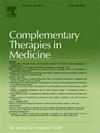A large-scale, international cross-sectional survey of published pediatrics authors: Perceptions of complementary, alternative, and integrative medicine
IF 3.3
3区 医学
Q1 INTEGRATIVE & COMPLEMENTARY MEDICINE
引用次数: 0
Abstract
Background
The use of complementary, alternative, and integrative medicine (CAIM) is commonly used among pediatric patients for various conditions. Pediatrics clinicians’ and researchers’ perceptions towards the incorporation of CAIM therapies have varied. This study aims to investigate the perceptions of both pediatrics researchers and clinicians regarding CAIM.
Methods
We conducted a large-scale, international cross-sectional online survey with published pediatrics authors who have published their work in pediatrics medical journals that are indexed in MEDLINE. In total, 34 494 researchers and clinicians were invited to complete the survey. The survey recorded respondents’ perceptions on various CAIM therapies. Descriptive statistics were generated from the quantitative survey results. A thematic analysis was conducted for responses to open ended questions.
Results
In total, 731 pediatrics clinicians and/or researchers responded to the survey, with about half of the respondents being faculty members/principal investigators (56.10 %) and/or clinicians (43.45 %) and from the Americas (46.56 %) or Europe (30.53 %). Over half of the respondents viewed mind-body therapies favourably (62.01 %) and the fewest respondents held favourable perceptions of biofield therapies (6.98 %). Respondents agreed or strongly agreed that there is value in conducting further research on CAIM therapies (85.52 %) and disagreed or strongly disagreed that they felt comfortable recommending most CAIM therapies to patients (64.83 %). A thematic analysis of our findings demonstrates that many pediatrics clinicians and/or researchers support further research on CAIM.
Conclusion
The findings from this study demonstrate that pediatrics clinicians and researchers have varying perceptions towards CAIM therapies. Respondents had the most positive perceptions of mind-body therapies and felt they did not have adequate training on CAIM. Further research is needed to establish more evidence-based educational resources on CAIM.
对已发表儿科论文作者的大规模国际横断面调查:对补充、替代和整合医学的看法。
背景:补充、替代和综合医学(CAIM)是儿科患者治疗各种疾病的常用方法。儿科临床医生和研究人员对采用 CAIM 疗法的看法各不相同。本研究旨在调查儿科研究人员和临床医生对 CAIM 的看法:我们对在MEDLINE收录的儿科医学期刊上发表过论文的儿科作者进行了大规模的国际横断面在线调查。共有 34 494 名研究人员和临床医生受邀完成了调查。调查记录了受访者对各种 CAIM 疗法的看法。根据定量调查结果生成了描述性统计。对开放式问题的回答进行了主题分析:共有 731 名儿科临床医生和/或研究人员对调查做出了回应,其中约一半的受访者是教师/首席研究员(56.10%)和/或临床医生(43.45%),来自美洲(46.56%)或欧洲(30.53%)。超过半数的受访者对身心疗法持肯定态度(62.01%),对生物场疗法持肯定态度的受访者最少(6.98%)。受访者同意或非常同意对 CAIM 疗法开展进一步研究的价值(85.52%),不同意或非常不同意他们认为可以向患者推荐大多数 CAIM 疗法(64.83%)。对我们的研究结果进行的主题分析表明,许多儿科临床医生和/或研究人员支持进一步研究 CAIM:本研究结果表明,儿科临床医生和研究人员对 CAIM 疗法的看法各不相同。受访者对身心疗法的看法最为积极,并认为他们没有接受过足够的 CAIM 培训。需要进一步开展研究,以建立更多关于 CAIM 的循证教育资源。
本文章由计算机程序翻译,如有差异,请以英文原文为准。
求助全文
约1分钟内获得全文
求助全文
来源期刊

Complementary therapies in medicine
医学-全科医学与补充医学
CiteScore
8.60
自引率
2.80%
发文量
101
审稿时长
112 days
期刊介绍:
Complementary Therapies in Medicine is an international, peer-reviewed journal that has considerable appeal to anyone who seeks objective and critical information on complementary therapies or who wishes to deepen their understanding of these approaches. It will be of particular interest to healthcare practitioners including family practitioners, complementary therapists, nurses, and physiotherapists; to academics including social scientists and CAM researchers; to healthcare managers; and to patients. Complementary Therapies in Medicine aims to publish valid, relevant and rigorous research and serious discussion articles with the main purpose of improving healthcare.
 求助内容:
求助内容: 应助结果提醒方式:
应助结果提醒方式:


